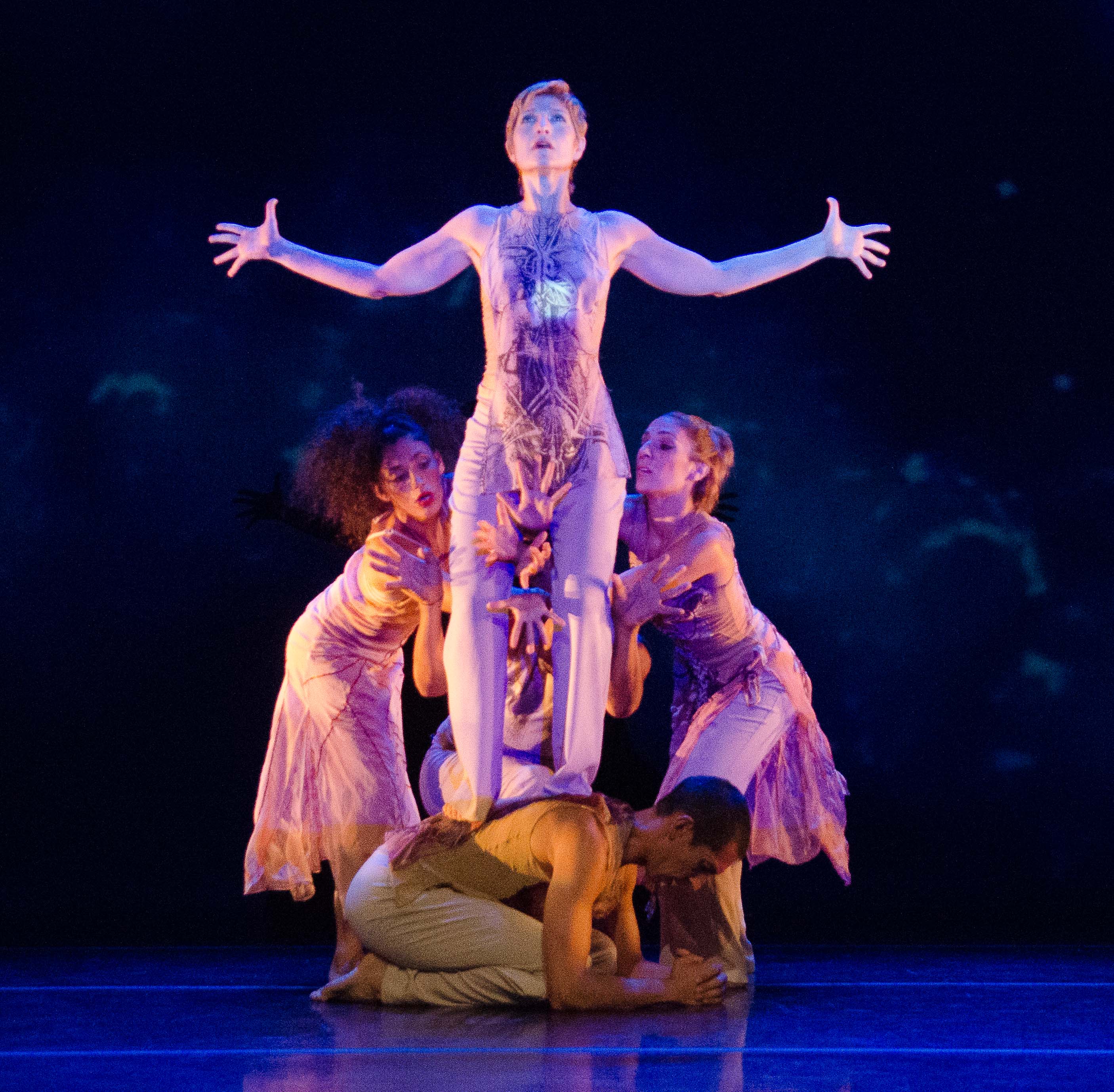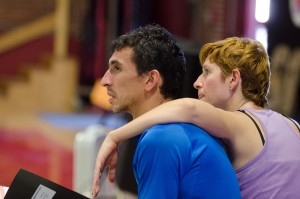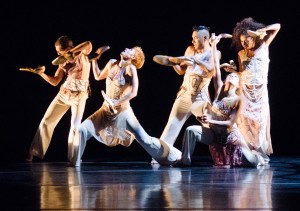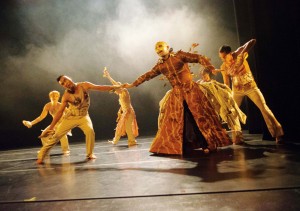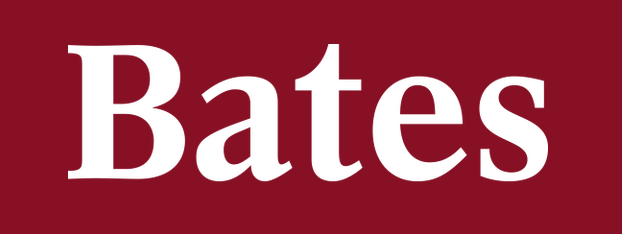It’s been bustling here at Bates Dance Festival. Not only has the first week of classes flown by, but there have also been workshops, performances, talks, and rehearsals throughout the week. Delfos Danza Contemporanea was in residence at the festival for their performances on July 24th and 25th, joining the vibrant Professional Program students in their classes, all sharing their energy together. They had a Show and Tell lecture demonstration, to discuss their creative process, and they performed low-tech excerpts from their piece Cuando los Disfraces se Cuelgan (When the Disguises are Hung Up).
Amidst all of the hubbub, I managed to sit down with Delfos’ co-artistic director, Claudia Lavista, for a moment to speak with her about her experiences here at Bates Dance Festival. I was curious about why she and her husband, Omar Carrum, have returned to BDF year after year to teach and share their work during the Professional Training Program and why they specifically chose to perform Cuando los Disfraces se Cuelgan at the festival this year.
I first asked her about what initially brought she and her husband to BDF.
“In 2007, I was able to come to Bates. It was my 10 year anniversary with my husband. We were supposed to have a big celebration and Laura [Faure] suggested, Why don’t both of you come?” She thought this would be “super cool,” so we came.
“We were very fortunate to come to the artist roundtable talks.” These are weekly meetings throughout the festival where the faculty and visiting artists sit together to discuss topics relating to the global dance community. After engaging in that dialogue and finding connection within the festival community, they “fell in love with BDF.”
“For the company and the school too, this has been a very important place to find ideas, different ways to see things, to find a lot of colleagues who are very interesting.” Lavista and Carrum co-founded the Mazatlán Professional School of Dance (EPDM) when the company relocated from Mexico City to Mazatlán. Lavista’s husband, Omar Carrum, is the Academic Director of the BFA program at EPDM.
Their program has become a place of intersecting ideas, movements, and questions. “We are questioning ourselves all the time,” she said during the Show and Tell. For them, this program has become an integrative way for a dedicated faculty of working artists to cultivate the next generation of colleagues. She explained how Bates offers opportunities for community building outside the festival.
“Whenever we meet someone that we really like, as a human being, and we like the project, we look for ways to expand the relationship. It’s not just us going there to make work, it’s about bringing them back to Mazatlán as well. This is how we want to work all of the time. . . We have been bringing people back to Mazatlán from BDF, like Chris Aiken and Angie Hauser. Kathleen Hermesdorf and Albert Mathias, Shamou, and Laura Faure too!”
“We want to feed this connection, to feed this friendship more and more. We want to build a strong bridge between Mazatlán and BDF.”
“Little by little we’ve become very close friends” with the BDF community. “I feel now that this is my family. Every time I come here, I feel that I’ve come home with my friends. This is a paradise. . . We are in love with this community, so we’ll always want to come back.”
During the Show and Tell talk Claudia explained, “to create a piece is a way to understand the world. That’s pretty much what we are trying to do every time we create. It’s not that we want to do pretty things, it’s just that we really want to know more about the world, and I think one way to learn more about the world is to learn more about yourself. Every time you do research, you are now discovering the world, and you are discovering yourself in it, and that’s wonderful. This piece helped us to learn new things.” I believe these thoughts reflect on the Festival as a whole. By supporting artists who create in this way, BDF cultivates an environment where new research and expansive dialogue can take place.
When I spoke to her at lunch, I wondered why they chose this piece specifically to perform at BDF this year.
“This is a piece that we really love, and is a piece that has a lot of meaning to us. It’s easy to travel, because the other pieces have a lot of production and other things. This piece seems like it has a lot of production, but it doesn’t. We travel with two suitcases. Although, there is a lot of multimedia involved, and we wanted to share what we are doing with multimedia, the piece is layered in many different ways.”
“But also it speaks about us in a very deep way. It allows you to see many different faces of the company. This piece is shaped in a way that allows us to share who we are, and also our culture, Mexican culture. It’s a very personal piece. We want to share that.”
I wanted to know more about how the company works in relation to their cultural heritage. During the Show and Tell, in one particular section of the piece that they shared, I was struck by the specificity of hand gestures in relation to one reactive dancer. To me their movements seemed to reflect their cultural heritage, by creating living, breathing alebrijes. Lavista explained further in the talk that they pulled inspiration from visual artists such as surrealist painter Leonora Carrington and Remedios Varo as well as magical realism author Gabriel Garcia Marquez.
“It’s hard because when you are born in a certain culture, you are brought up with certain things in your subconscious. It just came out.” In response to my comment about the alebrijes, she said, “we didn’t create that piece specifically about those, but you’re right, they are totally connected. The color of the piece is very related and connected to our culture, but in a more global way.”
“We come from a culture that is very rich in the past, and has many centuries of history, but it is also rich in the present. Contemporary art in Mexico is very strong. It is actually stronger than our ancient culture. It’s hard to travel as a Mexican company because when you say you are Mexican, everyone expects you to be a folkloric company. There is not much information about contemporary art in Mexico in most of the world. But we are very connected with the world, and we are very connected to contemporary thinking.”
This conversation was enlightening on many levels. As a dancer in the US, I desire to expose myself to a more global understanding of the world of contemporary dance. Claudia is one of many of this summer’s BDF faculty who comes from abroad, have a wide breadth of experience, and are very much connected to that global conversation. Speaking with her reminded me that through dance we always have the opportunity to express and share on a universal human level while thoroughly embracing our cultural lense. Her insights, both spoken and danced with the company, exude this passionately.
One of the last comments she made at the Show and Tell, I feel speaks directly to the depth, connection, and collective urgency of creating work in this art form at this time:
“At the end of the piece, we realized that the whole process led us to embrace the idea that what is really important is to live with integrity. Without false disguises. Valuing who you are, valuing others and nature, and celebrating life.”
Photo Credits: Arthur Fink Photography
This post was written by Meghan Carmichael. Meghan is the BDF Social Media Intern for the 2015 summer.

